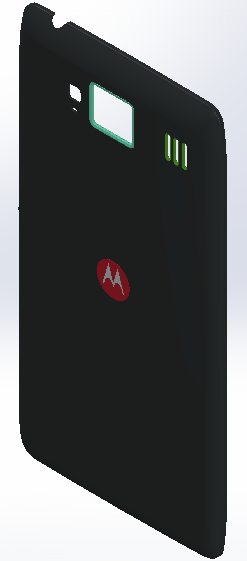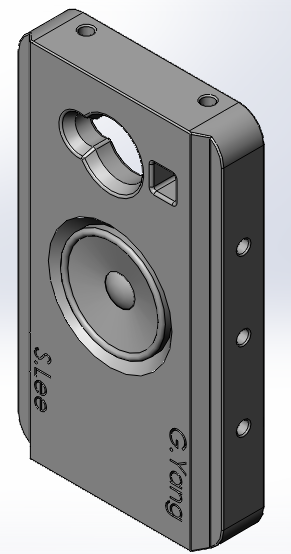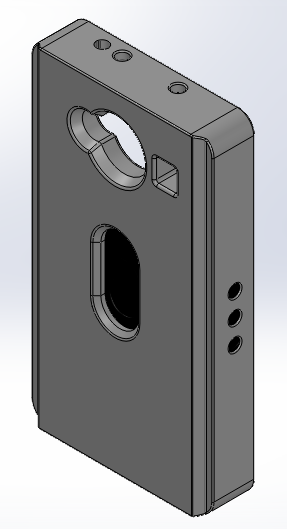05/01/2013
Entry for the Motorola RAZR MAXX HD BoomBox Challenge in ME102: Introduction to Mechanical Systems for Mechatronics at UC Berkeley. Qualified as a winner of the competition and will be going to Motorola for bringing the concept to life.
Team Members: Gordon Yang, Sherry Lee
Entry for the Motorola RAZR MAXX HD BoomBox Challenge in ME102: Introduction to Mechanical Systems for Mechatronics at UC Berkeley. Qualified as a winner of the competition and will be going to Motorola for bringing the concept to life.
Team Members: Gordon Yang, Sherry Lee
The Challenge
The Company [Motorola Mobility] is providing developer versions of the award-winning RAZR MAXX HD smartphone, and is looking for creative and talented engineers to push the boundaries in acoustics. This will be a rapid, iterative process over 6 weeks, with close collaboration between the students and Motorola engineers and designers... There will be a progress report due every second week as well as a final "Pitch" to Motorola executives at the end of the competition.

A First Look
From the very beginning, I was fully aware that most of the other competitors would lean towards a design that would incorporate either additional powerful speakers that slide in/out of the phone or extend and retract from the phone to simulate a boombox.
Designs like these would have numerous problems:
-Having moveable parts can compromise durability of phone.
-Detachable parts can be forgotten.
-Phone will be immobilized when sharing music if music only comes from the phone.
-Having a speaker system that operates on the back of the phone may obstruct room for a phone case.
I had to come up with something different.
Inspiration
I started fiddling around with my phone, just staring at it from all angles, removing and playing with the phone case that protected my phone, when suddenly, I thought of what would be great for the challenge--a durable phone case that is also a wireless speaker system.
I didn't have a name for it yet, but the idea seemed promising. An idea like this would require special consideration from both mechanical and electrical elements.
I didn't have a name for it yet, but the idea seemed promising. An idea like this would require special consideration from both mechanical and electrical elements.

The RAZR MAXX HD back case.
First Iteration
An early prototype of said concept. Multiple speakers around each side, totalling up to 10. Dimensions are 141 mm x 79 mm x 21 mm. For comparision, the Motorola Droid RAZR MAXX HD phone: 131.9 x 67.9 x 9.3 mm.
This thing was fat, but we weren't sure what size our electronics were going to be. We would need a Bluetooth chip for wireless interfacing with the phone, an onboard battery supply that is rechargable, and of course the speakers.
This thing was fat, but we weren't sure what size our electronics were going to be. We would need a Bluetooth chip for wireless interfacing with the phone, an onboard battery supply that is rechargable, and of course the speakers.


There is also giant speaker for the back, meaning in total, there would be 11 speakers.
Research
Research was done and found that having more speakers does not necessarily mean better sound quality. We joked about our mistake and agreed on having less, but larger speakers. We would only need 5 speakers, one on each side and on on the back.
Final Design
We also finally agreed upon a name--the SwitchCase,
a durable case that is also a wireless bluetooth speaker system. We were so happy about picking out a name that we even made a logo for it.
We also finally agreed upon a name--the SwitchCase,
a durable case that is also a wireless bluetooth speaker system. We were so happy about picking out a name that we even made a logo for it.

The SwitchCase Logo with a white background. The brackets around the s resemble a phone case and the letters outside of it represent sound waves.

With a black background.

Our Pitch to Motorola


Specifications
The SwithCase features 5 rectangular micro speakers placed on each side of the case, with the largest one on the back.
The SwitchCase functions as a wireless speaker system with an onboard Li-Ion battery supply. The modeled Li-Ion battery found here was one for a basic cell phone, much larger than what would be necessary for the SwitchCase, but modeling this gives perspective of what the worst case scenario would be for thickness. All of the circuitry and wiring in the SwitchCase are done inside the durable material of the case, meaning that users would not have to worry about damaging any of its electronics including its powerful speakers.

Here we have a section view showing that the speakers are well embedded into the case.

The largest electronic component of the SwitchCase would be the onboard battery supply. Here we have a mock up of how large the total circuit board (green) would be based on the size of the battery.
To make all this wiring and circuity invisible to a user, a partition is used as a border between the circuit board and the phone.
To make all this wiring and circuity invisible to a user, a partition is used as a border between the circuit board and the phone.
Why the SwitchCase?
Here are some reasons why you should pick the SWITCHCASE:
Here are some reasons why you should pick the SWITCHCASE:
1.The switchcase is adaptable. You can interface it with any motorola phone.
2. Convenient, you would carry it around with your phone and also fits in your pocke
Here we have a section view showing that the speakers are well embedded into the case.

3. Effective, the SwitchCase enhances sound quality coming from your phone utilizing the additional built in speakers of the SwitchCase. This would be the perfect feature when there are a few friends just crowding over your shoulder watching a video (like in the picture).

4. Mobile, you can utilize the SwitchCase's bluetooth capability to make it a portable boombox, giving full remote control of how you want to play your sound with your phone. This would be great for the times when you want to share sound across a larger group of friends, but still want access to your phone.

5. Unique, you would also be able to create surround sound by interfacing your phone with multiple SwitchCase devices. The Case is customizable in different colors and decorations for your personal uniqueness/preferences!
Results
Once all the presentations were given, the judges voted on who the winners--that is who got to go to Motorola to utilize their resources and use their own rapid prototyping machines to bring to life the winners' concepts. The SwitchCase was placed as a winner and at the moment, I am awaiting the details of how to take this to the next step.

